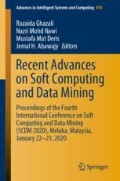Abstract
Pneumonia is an infectious disease that attacks the lungs, causing the air sacs in the lungs to become inflamed and swollen. Pneumonia is caused by fungi, bacteria, and viruses. Pneumonia can affect anyone, including children. The most successful type of method for analyzing images to date is the Convolutional Neural Network (CNN). The Convolutional Neural Network classification is implemented based on multiple extraction features. The purpose of this study is to evaluate the performance of ID-Convolutional to classify pneumonia with various CNN architectures to produce the best performance in accuracy and compare it with the other baseline methods that have been made. Experiments are carried out based on the number of hidden layers and configuration parameters. The parameters used are the epoch, kernel, strides, and pool size. The result shows that the proposed method achieves 94% inaccuracy and 0.93 in AUC. Besides, CNN has a competitive result compare to the other baseline methods.
Access this chapter
Tax calculation will be finalised at checkout
Purchases are for personal use only
References
UNICEF, Pusat Pers | UNICEF Indonesia. UNICEF Indonesia, (2015). [Online]. Available: https://www.unicef.org/indonesia/id/pusat-pers. Accessed 30 Jun 2019
WHO, Pneumonia (2016). [Online]. Available: https://www.who.int/news-room/fact-sheets/detail/pneumonia. Accessed 30 Jun 2019
Ri KK (2010) Pneumonia Balita. Bul Jendela Epidemiol 3:43
Fimela, Cara Pencegahan Penyakit Mematikan Pneumonia Pada Anak-Anak—Parenting Fimela.com, (2016). [Online]. Available: https://www.fimela.com/parenting/read/3765370/cara-pencegahan-penyakit-mematikan-pneumonia-pada-anak-anak. Accessed 19 Feb 2019
Rachmad A (2008) Pengolahan Citra Digital Menggunakan Teknik Filtering Adaptive Noise Removal Pada Gambar Bernoise | Aeri Rachmad—Academia.edu. [Online]. Available: https://www.academia.edu/27291316/Pengolahan_Citra_Digital_Menggunakan_Teknik_Filtering_Adaptive_Noise_Removal_Pada_Gambar_Bernoise. Accessed 25 Feb 2019
Krizhevsky A, Sutskever I, Hinton GE, ImageNet classification with deep convolutional neural networks, pp 1–9
Bengio Y, Haffner P (1998) Gradient-based learning applied to document recognition. 86(11)
Sun M, Song Z, Jiang X, Pang Y (2016) Author’s accepted manuscript learning pooling for convolutional neural network. Neurocomputing
Abiyev RH, Ma’aitah MKS (2018) Deep convolutional neural networks for chest diseases detection. J Healthc Eng, 4168538, 2018
Bar Y, Diamant I, Wolf L, Lieberman S, Konen E, Greenspan H (2018) Chest pathology identification using deep feature selection with non-medical training. Comput Methods Biomech Biomed Eng Imaging Vis 6(3):259–263
Islam MT, Aowal MA, Minhaz AT, Ashraf K (2017) Abnormality detection and localization in chest X-rays using deep convolutional neural networks
Pattar S, Pavithra R (2015) Detection and classification of lung disease—pneumonia and lung cancer in chest radiology using artificial neural network. Int J Sci Res Publ, 5(1):2250–3153
Norris M (2018) Convolutional neural networks in radiology CS230-Fall 2018 course project
Saraiva A et al (2019) Classification of images of childhood pneumonia using convolutional neural networks
LeCun Y, Bengio Y, Hinton G (2015) Deep learning. Nature 521(7553):436–444
Ferreira A, Giraldi G (2017) Convolutional Neural Network approaches to granite tiles classification. Expert Syst Appl 84:1–11
Integrated Performance Primitives 2017 Developer Reference, “Histogram of Oriented Gradients (HOG) Descriptor.”
Mohanaiah P, Sathyanarayana P, Gurukumar L (2013) Image texture feature extract approach. Int J Sci Res Publ 3(5):1–5
Zhu W, Zeng N, Wang N (2010) sensitivity_specificity_accuracy_CI.pdf, pp 1–9 2010
Author information
Authors and Affiliations
Corresponding author
Editor information
Editors and Affiliations
Rights and permissions
Copyright information
© 2020 Springer Nature Switzerland AG
About this paper
Cite this paper
Fathurahman, M., Fauzi, S.C., Haryanti, S.C., Rahmawati, U.A., Suherlan, E. (2020). Implementation of 1D-Convolution Neural Network for Pneumonia Classification Based Chest X-Ray Image. In: Ghazali, R., Nawi, N., Deris, M., Abawajy, J. (eds) Recent Advances on Soft Computing and Data Mining. SCDM 2020. Advances in Intelligent Systems and Computing, vol 978. Springer, Cham. https://doi.org/10.1007/978-3-030-36056-6_18
Download citation
DOI: https://doi.org/10.1007/978-3-030-36056-6_18
Published:
Publisher Name: Springer, Cham
Print ISBN: 978-3-030-36055-9
Online ISBN: 978-3-030-36056-6
eBook Packages: Intelligent Technologies and RoboticsIntelligent Technologies and Robotics (R0)

